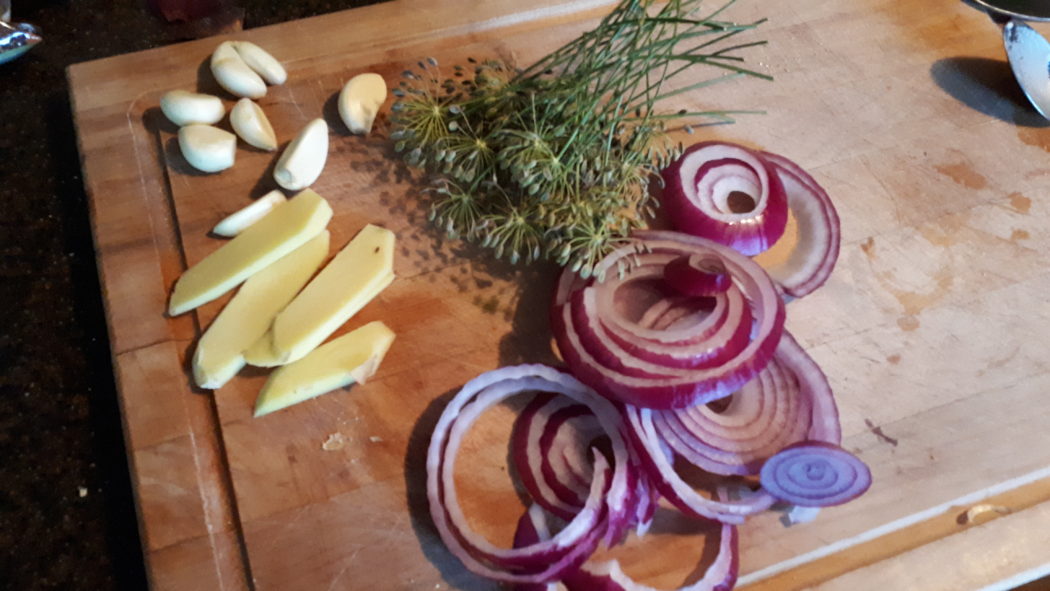Pickling season arrived recently, or at least I assume it did. Mini cukes, pearl onions, dill weed, and pickling spices all showed up in the local grocery store suddenly. Naturally, I impulse bought all of those things with the bright idea that I would try pickling for the first time. My ultimate goal was to attempt to make something I’ve heard a lot about but never tried; Pickled Pike.
For pickled pike, you need some pike!
Step 1, of course, was to catch some pike. This seemed like a trivial task, I catch them all the time when I am fishing for other species. Targeting them specifically made for a challenging and frustrating day of mishaps. Pike are always a fun fish to catch in the kayak, since they put up a good fight and can get so big. I lost one right beside the boat because my net was too small, which always sucks. In the end though I landed 2 good sized pike worth keeping.

I should learn how to pickle
Next up was actually learning what I needed to do to pickle things. This involved a bunch of googling and a few trips to the store to get ingredients as I figured out what recipe I wanted to use.
There are a lot of recipes to choose from online, but being my first time I just wanted something basic. Noticing that most of the recipes had the same brine base, I settled on a pretty simple mix of vinegar, salt, and a little sugar. A pre-blended pickling spice mix from the grocery store would round everything out. With all the basics covered, it was time to prep the fish.
Brine, brine, brine some more
Preparing the pike was pretty straightforward. I cleaned them up, skinned them, and cut them up into bite sized chunks. In a bowl I made a heavy brine of salt and cold water, and put the chunks in overnight.

After letting it sit for a day and night, I pulled everything out and got ready to actually pickle it. Figuring that pickled pike should be similar to other pickled fish, I made my basic brine. In a large pot I mixed about 4 parts vinegar to 1 part water, a half cup or so of pickling salt, and a half cup or so of sugar. It would have probably been best if I’d measured, but that’s just not how I roll.
Chopped and ready to boil
My ingredients were out and I sliced them into suitable sized pieces. Onion, garlic, dill, and a few thin slices of ginger would provide my flavoring for this batch.

As I was preparing everything I was still reading and learning about the process on my phone. To my surprise, I learned that pike can often contain tapeworm larvae, and that they are not killed by the salt in the brine. While I could certainly stand to lose a few pounds, this was not how I wanted to meet that goal. My options, according to the internet, were either freezing, or cooking. Well, I wasn’t about to throw the fish into the freezer for 3 days at this point. Since I had to bring the brine to a boil anyways, it seemed a simple solution to just throw the fish in with it for the last 15 seconds or so to kill off any potential parasites.

Concerns about parasites taken care of, I plucked out the now cooked chunks of fish and packed them into jars. I layered them with the onions and spread some of the other ingredients throughout. Lastly, I poured the hot brine into the jars until everything was covered, screwed the lids on tight and set it all aside to cool.

Taste test, the only way to be sure
After sitting in the fridge for 7 days, it was time to try my first attempt at pickled pike. It was not good.
My major mistake was boiling the fish in the brine. I really should have frozen it and done it properly. By boiling it even for the 15 or 20 seconds that I did, the fish got pretty cooked. With that being the case, it didn’t take up any of the brine, the bones didn’t dissolve, and it was just hard chunks of flavorless fish meat. Yuck.
Ok, so this batch didn’t turn out at all, however I did learn a lot about the pickling process, and successfully made some pickled onions and cucumbers which turned out just fine. Next time I want to make some pickled pike, I will know to freeze it first, and be armed with the knowledge of making a proper brine mixture. All in all, it was a fun experiment and I’m looking forward to actually doing it properly next time, but for now, these two jars are going in the garbage.






[…] people who know me know that I like to cook, and I like to experiment with food. Recently, I made Shrimp Soup, a personal favorite of mine for a cold and otherwise miserable day. […]
2proposals
gay dating red flags https://gaypridee.com/
gay phone chat https://gaytgpost.com/
senior gay women dating https://speedgaydate.com/
interactive slots https://2-free-slots.com/
slots machines free online https://freeonlneslotmachine.com/
dragon slots https://candylandslotmachine.com/
real casino gambling slots https://pennyslotmachines.org/
clearwater slots https://slotmachinesworld.com/
texas tea slots for fun https://slotmachinesforum.net/
what slots pay the most https://slot-machine-sale.com/
liberty slots casino https://beat-slot-machines.com/
real money slots https://download-slot-machines.com/
scatter slots characters https://411slotmachine.com/
my vegas slots cheat tool https://slotmachinegameinfo.com/
dissertation-help writers https://buydissertationhelp.com/
dissertation service https://dissertationwriting-service.com/
writing doctoral dissertation https://help-with-dissertations.com/
dissertation help free https://mydissertationwritinghelp.com/
dissertation help in bangalore https://dissertations-writing.org/
dissertation outline example https://helpon-doctoral-dissertations.net/